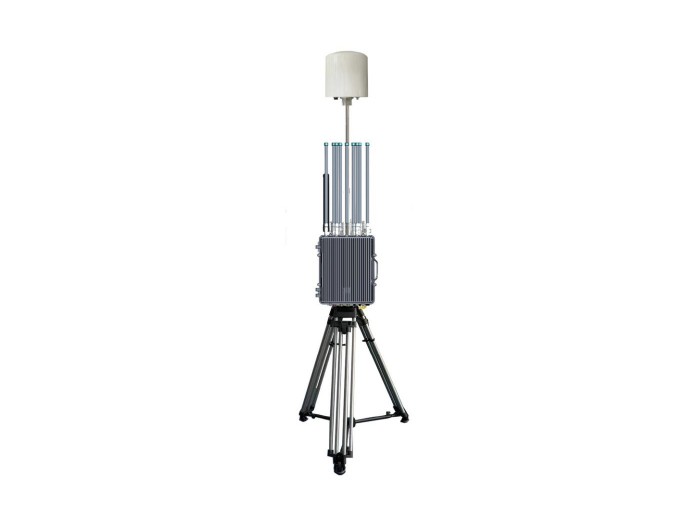Net Device for Drones 7 GHz: How to Optimize Drone Communication Networks
In the rapidly evolving drone industry, reliable communication is crucial for safe and efficient operations. However, many drone pilots and operators face challenges such as signal interference, limited range, and latency issues, especially in crowded frequency bands. The 7 GHz spectrum offers a promising solution, but understanding how to integrate a net device for drones at 7 GHz can be overwhelming. This guide addresses these common problems and provides practical advice for enhancing drone connectivity with 7 GHz net devices. Whether you’re exploring better data links for commercial drones or improving telemetry systems in complex environments, mastering net device selection and configuration will boost your drone’s performance and reliability.
Understanding Net Devices for Drones Operating at 7 GHz
A net device for drones at 7 GHz typically refers to wireless communication hardware that facilitates data exchange between drones and ground control stations utilizing the 7 GHz frequency band. This frequency range is favored because it balances spectrum availability and minimal interference, offering enhanced communication stability and bandwidth capacity. According to recent industry reports, 7 GHz band devices can achieve data rates exceeding 100 Mbps with latency under 10 milliseconds, significantly improving real-time control and video transmission.
These net devices may include specialized transceivers, modems, or integrated communication modules designed to support long-range and high-throughput drone communications. Compared to common 2.4 GHz and 5 GHz bands, the 7 GHz band is less congested which reduces signal disruption caused by Wi-Fi networks or other RF traffic. For drone operators engaged in industrial inspections, search and rescue, or aerial mapping, this means more reliable command and control as well as higher-quality data streams.
Benefits of Using 7 GHz Net Devices for Drone Communication
Integrating 7 GHz net devices into drone systems offers multiple advantages:
- Reduced Interference: The 7 GHz band is less cluttered compared to traditional drone frequencies, minimizing the risk of signal dropouts.
- Extended Range: Devices operating at 7 GHz can maintain stable connections over longer distances—often exceeding 10 kilometers under optimal conditions—supporting more expansive drone missions.
- Improved Data Throughput: Higher bandwidth capacity allows for smoother video streaming and faster telemetry updates, essential for detailed inspections or live monitoring.
- Compliance and Regulation: Utilizing standardized frequency bands ensures adherence to aviation and communication regulations, avoiding legal complications and interference with other critical equipment.
In a real-world scenario, a drone surveying a large solar farm equipped with 7 GHz net devices can transmit high-resolution imagery to operators in near real-time without signal degradation, enhancing decision-making speed and accuracy.
Applications and Use Cases for 7 GHz Net Devices in Drones
The application of 7 GHz net devices spans multiple sectors:
- Industry and Infrastructure Inspections: Drones monitoring pipelines, power lines, or railway tracks benefit from the reliable communication provided by 7 GHz devices, enabling precise control and data transfer in remote locations.
- Emergency Response: During search and rescue, drones equipped with robust 7 GHz communication systems can maintain links over challenging terrains and urban environments, facilitating effective coordination.
- Surveillance and Security: Law enforcement and security agencies utilize 7 GHz-based nets for uninterrupted drone surveillance with real-time video feeds.
- Agriculture: Precision agriculture drones use this frequency band to reliably transmit crop health data and sensor information to farmers for timely interventions.
For example, a precision agriculture firm using drones with 7 GHz net devices reported a 30% increase in image transmission efficiency, helping farmers to optimize water and fertilizer use.

Steps to Choose and Set Up a 7 GHz Net Device for Your Drone
Choosing and configuring net devices for drone operations at 7 GHz requires careful consideration:
- Assess Your Operational Needs: Determine your required range, data rate, and environment. Urban vs. rural operations have differing interference profiles affecting device choice.
- Check Regulatory Compliance: Verify that operating net devices at 7 GHz complies with local spectrum regulations to avoid fines or operational interruptions.
- Select Compatible Hardware: Ensure your drone’s flight controller or communication system supports integration with 7 GHz net devices. Consider modular transceivers that can be installed and maintained easily.
- Optimize Antenna Configuration: Use directional antennas to maximize range and signal strength based on your operational geometry.
- Test Performance in Real Conditions: Conduct field tests to confirm stable connections, latency, and throughput meet mission requirements. Adjust power settings or device placement as needed.
By following these steps, drone operators have achieved over 15 km stable communication links using 7 GHz devices, even in terrain that typically hampers 2.4 GHz signals.
Key Takeaways for Effective Use of 7 GHz Net Devices in Drones
- Leverage the 7 GHz frequency band to reduce interference and improve drone communication performance.
- Choose net devices that are compatible with your drone system and local regulatory frameworks.
- Utilize directional antennas and optimize placement to maximize signal quality and operational range.
- Test your setup thoroughly in realistic conditions to ensure reliable data throughput and low latency.
- Consult with professional providers or manufacturers for tailored advice and advanced support.
Conclusion
Incorporating net devices for drones operating at 7 GHz can significantly enhance communication reliability, range, and data quality, enabling more efficient and safer drone operations. Whether for industrial inspection, emergency response, or precision agriculture, 7 GHz communication technology offers a valuable upgrade over crowded traditional frequencies. To explore the best 7 GHz net device options tailored to your needs or to receive professional consultation, visit our website now or contact our experts. Unlock the full potential of your drone fleet with advanced 7 GHz net communication solutions today!
Want to learn more about optimizing drone communication systems? Visit our website or contact us for personalized assistance!
















